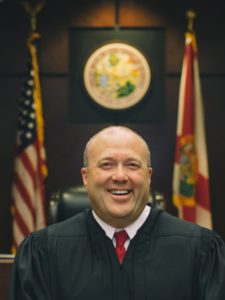
Checks, balances and the flag burning example
Ask Judge Smith
 Judge Layne Smith
Judge Layne Smith
Our Founding Fathers loathed tyrants, so they worked hard to create a better functioning national government that protected the rights of the people and the sovereignty of the states. Their solution was to separate the powers of government among the legislative, executive, and judicial branches so no person or branch would accumulate too much power.
Additionally, they provided a system of checks and balances each branch can employ to prevent another branch from overreaching. Let’s identify some of those checks and balances.
Executive branch checks and balances
The president can veto laws passed by Congress.
The president nominates federal judges for confirmation by the Senate.
Legislative branch checks and balances
By a two-thirds super-majority vote, Congress can override presidential vetoes.
The House can impeach, and the Senate can remove the president from office.
The Senate can reject the president’s judicial nominees.
The House can impeach, and the Senate can remove federal judges from office.
Congress and the states’ legislatures can amend the Constitution.
Judicial branch checks and balances
Federal judges can invalidate unconstitutional laws.
Flag burning
Let’s use an example from history to better illustrate how the checks and balances work. Freedom of speech from government interference covers more than the spoken and written word. It also extends to conduct intended to convey a specific message that viewers are likely to see and understand, even if they vehemently disagree!
For example, the State of Texas enacted a criminal law that prohibited the desecration of an American flag. Afterward, a self-described communist poured kerosene on an American flag and burned it. Texas prosecuted, convicted, and sentenced him to a year in prison.
The U.S. Supreme Court reversed the defendant’s conviction on appeal because the Texas law violated his First Amendment right to free speech.
In response, Congress passed the “Flag Protection Act.” The president could have vetoed the law, but he didn’t. If he had, Congress could have overridden his veto by a super-majority vote. The U.S. Supreme Court then struck down the “Flag Protection Act” as unconstitutional because it too violated the First Amendment right to free speech.
Both Supreme Court decisions to strike down the federal law and the Texas law prohibiting flag burning were unpopular. In response, Congress proposed a Constitutional amendment that, if ratified, would have allowed it to criminalize the physical desecration of the nation’s flag.
However, the proposed constitutional amendment was never voted out of Congress. Had it been, at least 38 state legislatures would have had to ratify the new amendment to make it the law.
In this real-life example, the judiciary checked overreaches by the legislative branch, and Congress still tried to get its way by amending the Constitution.
That’s how checks and balances work.
J. Layne Smith is a Leon County judge who often speaks and writes about the law, our legal system, and the administration of justice. Email your questions to askjudgesmith@gmail.com.






